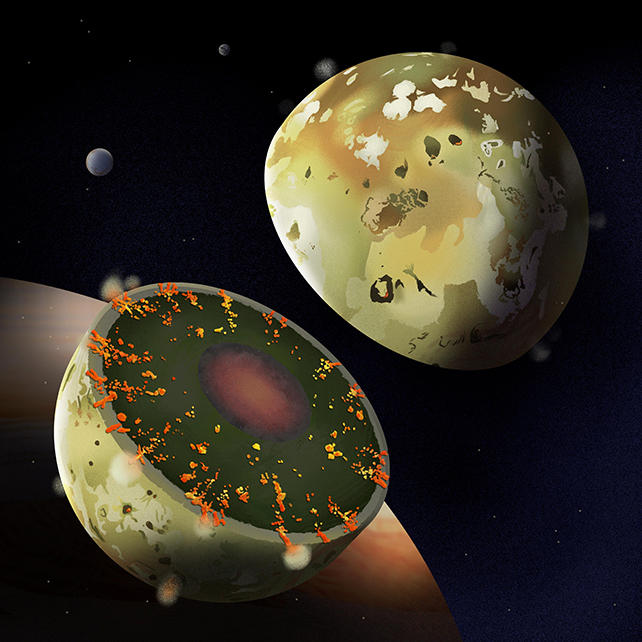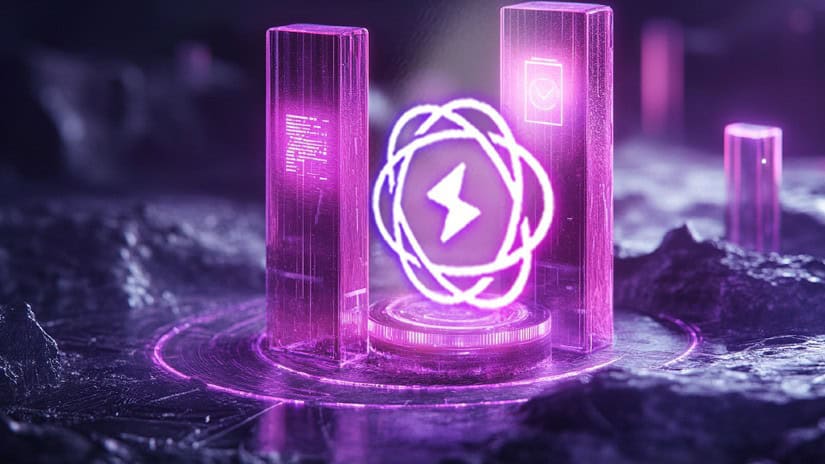Jupiter’s moon Io is the most volcanically active body in our Solar System, with around 400 volcanoes and extensive lava flows spread across its surface – but contrary to what scientists thought, a new study suggests this geological chaos is not powered by a global, moonwide ocean of magma below the surface.
Using images snapped by NASA’s Juno spacecraft, gravitational measurements, and historical data about Io’s tidal deformations, an international team of researchers has determined that the moon’s volcanoes are powered by a scattering of magma chambers in an otherwise solid mantle.
The findings counter previous theories about how Io’s volcanoes are powered, and point to a mostly solid mantle for the moon. With magma oceans believed to be present on many worlds, especially early in their formation – including our own Moon – we may need to rethink how planets form and evolve.

While Galileo first spotted Io in 1610, its volcanism wasn’t discovered until 1979: that’s when imaging scientist Linda Morabito, from the NASA Jet Propulsion Laboratory (JPL) in California, saw a volcanic plume from an image taken by Voyager 1.
“Since Morabito’s discovery, planetary scientists have wondered how the volcanoes were fed from the lava underneath the surface,” says space physicist Scott Bolton, from the Southwest Research Institute in San Antonio.
“Was there a shallow ocean of white-hot magma fueling the volcanoes, or was their source more localized? We knew data from Juno’s two very close flybys could give us some insights on how this tortured moon actually worked.”
frameborder=”0″ allow=”accelerometer; autoplay; clipboard-write; encrypted-media; gyroscope; picture-in-picture; web-share” referrerpolicy=”strict-origin-when-cross-origin” allowfullscreen>
Io circles Jupiter every 42.5 hours, pushed and pulled by massive gravitational forces in an elliptical orbit that constantly reshapes the moon. Through a phenomenon known as tidal flexing, huge amounts of internal heat are produced.
However, the deformations laid out in this new study aren’t extensive enough to support the idea of a global magma ocean – or at least one that’s near the surface, based on previous research into the gravitational readings this would produce.
“This constant flexing creates immense energy, which literally melts portions of Io’s interior,” says Bolton.
“If Io has a global magma ocean, we knew the signature of its tidal deformation would be much larger than a more rigid, mostly solid interior.”
The eruptions and lava flows on Io can reach hundreds of kilometers or miles in size, and its surface – sometimes described as being like a pizza – is covered in colorful remnants of volcanic activity, including silicates and sulfur dioxide. It’s a mountainous, ever-changing moon that’s constantly on fire.
As well as telling us more about this Jovian moon, the research also gives scientists useful information about the extent of the differences tidal flexing can make to the interior of a moon or planet – information that can be carried forward into future studies.
“It has implications for our understanding of other moons, such as Enceladus and Europa, and even exoplanets and super-Earths,” says astronautical engineer Ryan Park, from the NASA Jet Propulsion Laboratory (JPL) in California.
The research has been published in Nature.








Leave a Comment